Alfargo’s and the second wave of #menswear
Since 2021, Alfargo’s Marketplace has anchored New York’s menswear revival — serving as a stylish meetup of vintage, Ivy, and #menswear 2.0 energy. Now it’s evolving, and so is the scene.
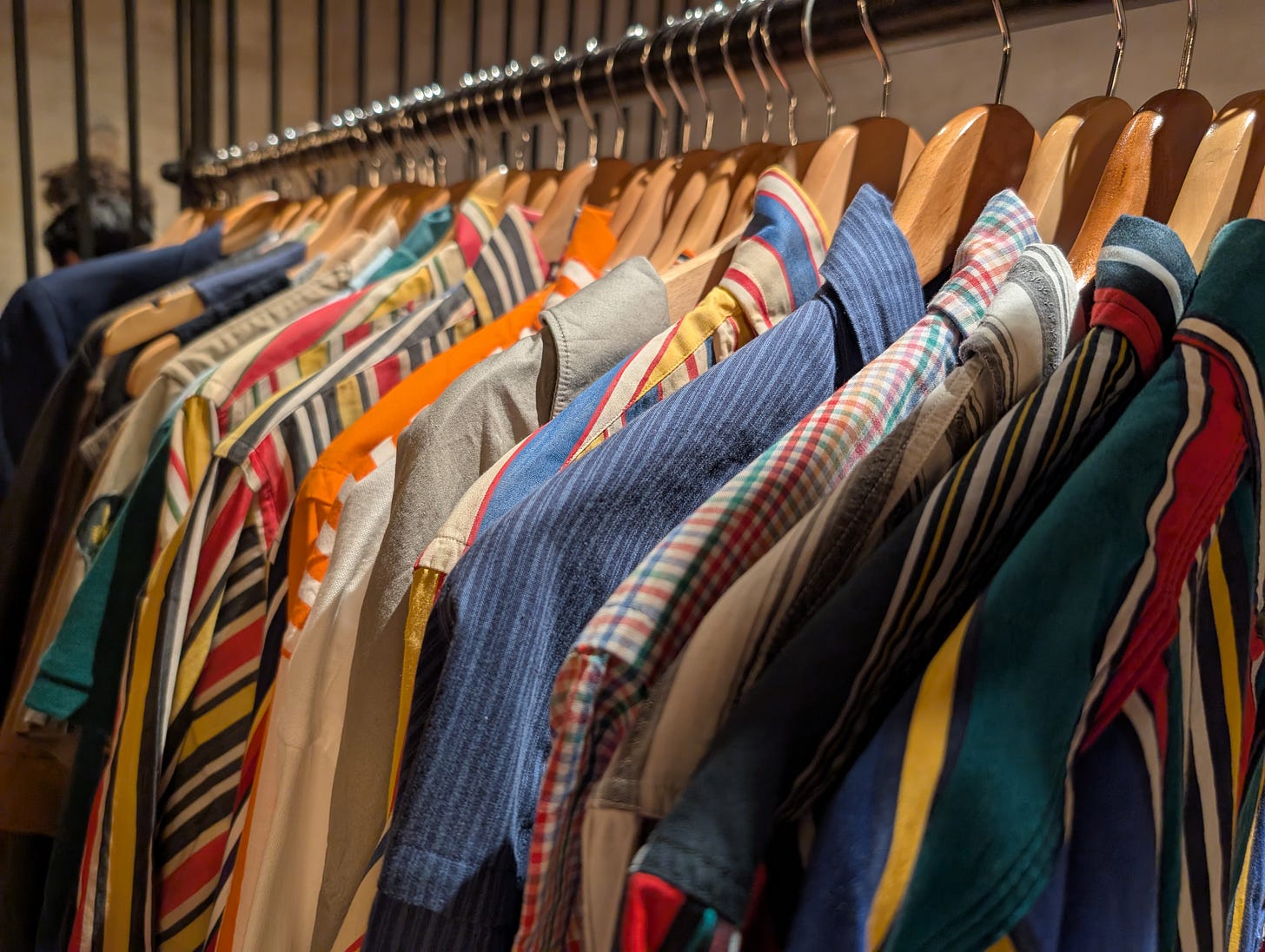
In the years since the pandemic, Alfargo’s Marketplace has become a cornerstone of New York’s revitalized menswear scene. What began as a pop-up vintage sale on a Bowery sidewalk now draws large crowds to Neuehouse. As the market has grown and evolved, its vibe has shifted — becoming more polished and a little corporate, which complicates its original, grassroots appeal for long-timers. Yet it remains a vital space where heritage brands, internet tastemakers and menswear enthusiasts converge under one roof.
Launched in 2021, the monthly market channeled the energy of online men’s fashion discourse into real-life connection. At a time when most Americans were dressing down, Alfargo’s met the demand for durable, timeless garments for those who chose to go the other way. At the end of the day, it was an excuse to throw on a fit, see some friends and dig for some affordable vintage, as longtime attendee Dan Hakimi put it at last month’s market.
“It was a time that we needed to build community, when everybody had been stuck at home for so long and had no excuse to get dressed,” Hakimi said. “So people who wanted to get dressed, who were into clothes…wanted to find cool clothes, see people and talk about menswear.”
Vintage is still at the heart of the market, but today it’s bigger, more recognizable, and more diverse in it’s offerings. The market now sells high-end contemporary pieces, vintage menswear, jewelry and candles in addition to offering on-site tailoring and even a pop-up salon. While some lament the shift from scrappy popup to curated emporium, many agree Alfargo’s remains one of the few places where menswear still feels vibrant, alive and — and still to an extent — within reach.
Brian Davis, owner of the Tuckahoe-based vintage shop Wooden Sleepers, says the market is more than just a place to sell for him. It’s a refreshing break from the often competitive and territorial trade side of the industry he’s used to as one of the nation’s best-known vintage sellers.
“It has a totally different energy than a trade show, which is very corporate — people’s jobs and livelihoods are on the line — or even, in my world, a vintage show, which can be really competitive and stressful,” Davis said standing on the sidewalk outside the venue. “My business is pretty solitary — I run a by-appointment showroom that’s only open to the public one day a week—so this is a rare chance for me to meet people who already know my work, introduce myself to new folks, and just hang out with others in the scene that I’ve become friends with. It’s about feeling part of something."
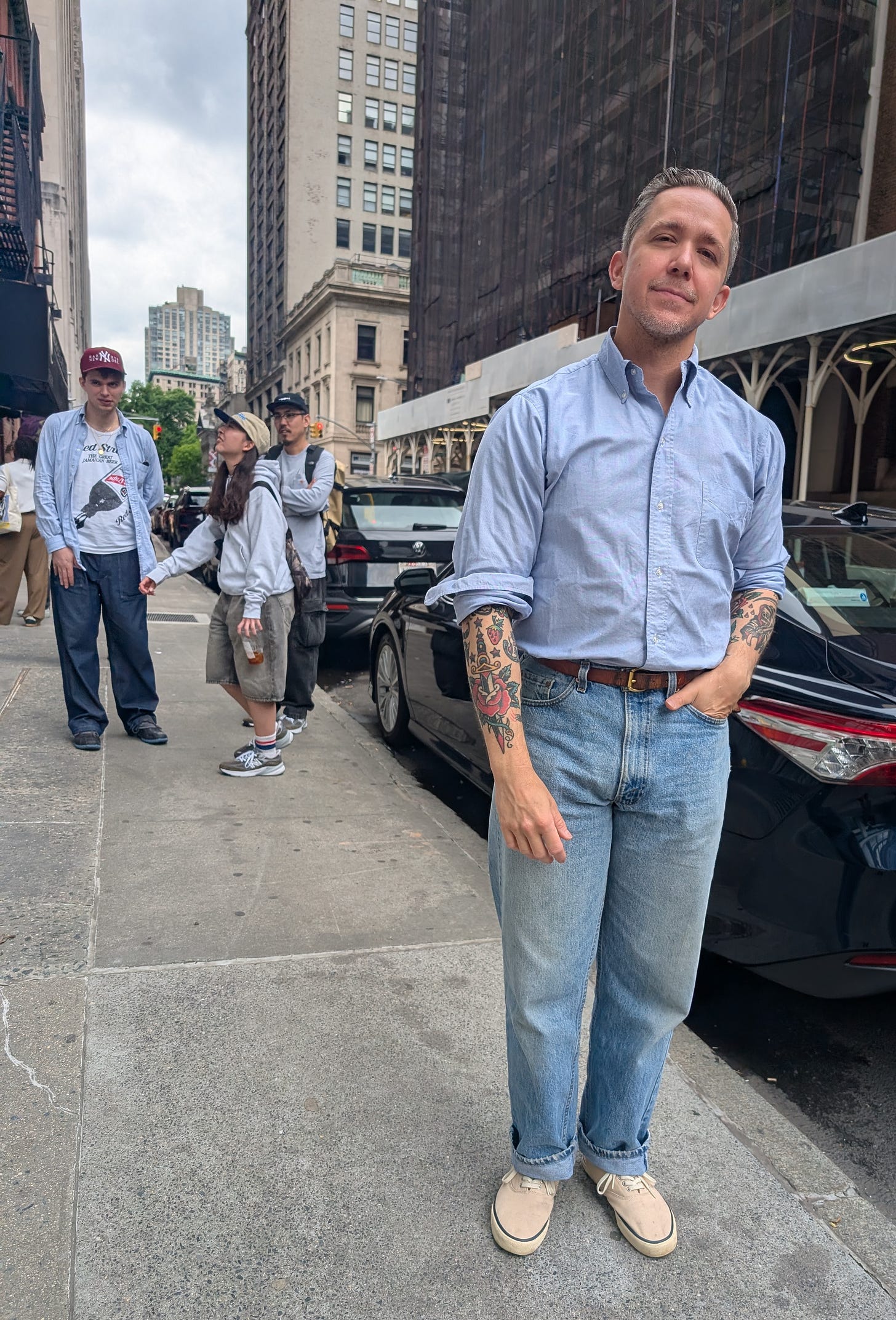
Other market regulars see the rise of Alfargo’s as part of a broader trend since the pandemic. Denny Balmaceda — a 37-year-old New Jersey–raised menswear creative, longtime blogger and market vendor — drew a direct line from today’s scene to the early-2010s Tumblr era known as “hashtag menswear.”
“I always say this feels like the second coming of ‘hashtag menswear’ because I lived through that time where it was like, we were all just nerds about it — and we still are…[but] menswear has become this thing where it's kind of like how Comic-Con, it has this culture within itself.” Balmaceda said, between selling items. “But the community is so much better now. And bigger too in a way where it's less gatekeeping, more about embracing.”
The current growth in interest in quality tailoring and classic menswear is arguably a revival of an online subculture beginning in the late aughts, which peaked in the early 2010s on Tumblr and other sites like StyleForum and Instagram. The movement consisted of guys obsessing over the minutia of classic men’s tailoring, Ivy League style, sprezzatura and high-quality craftsmanship.
The term was coined partly in jest, sometimes to criticize the fastidiousness of menswear heads obsessed with particular details. Ultimately, hashtag menswear became a shorthand for a specific moment when guys got very into clothes, treated them seriously and discussed them obsessively online.
GQ editor Cam Wolf predicted a #menswear 2.0 would blossom in the wake of the pandemic. In a prescient 2020 piece, Wolf predicted the pandemic, like the 2008 recession that triggered the first wave, would cause a cultural and economic shift that would push menswear from loungewear, hypebeastism and big luxury logos toward tailored, ethically made and high quality clothes.
While the first wave of 21st-century menswear drew heavily from Italian sartorial traditions — soft, unlined sport coats, double monk-straps, and minimal pants break trousers dominated the 2010s discourse. #Menswear 2.0 has developed its own stylistic bent.
Menswear 2.0 continues the obsession with Ivy style and a focus on vintage, American-made pieces, but it’s less interested in making tailoring look youthful. The aesthetic leans more Anglo-American in its sensibility, embracing what’s now dubbed #grandpacore: think wide-legged pleated chinos, navy blazers, Oxford cloth button-downs and Alden tassel loafers. While it’s not everyone’s cup of tea — some might call the look even “stodgy” — it’s stodgy on purpose. A reaction to the excesses of its predecessor. While the #menswear 1.0 scene took pains to avoid looking too conservative by, say avoiding baggy cuts and pleats. Today, eschewing the pressure to dress in a forward-facing style has driven men of diverse backgrounds to embrace an unflinchingly traditional American style. At a time when “the man” — big tech moguls — wear t-shirts and jeans, there’s something a little edgy about putting on a bow-tie, or a double breasted navy blazer, unironically.
Many of the best dressers in the menswear scene aren’t necessarily aiming to look like a guy at Pitti — they’re channeling something closer to Black Ivy by Jason Jules or a professor walking his dog on the Upper East Side.
In addition to meeting the needs of guys suddenly interested in classic aesthetics — aided by the likes of menswear writer Derek Guy — the market was a much-needed community gathering when it launched.
So when the first Alfargo’s took off, Davis immediately saw the potential. “I thought, wow — what a cool concept and something that’s so needed,” he said. For him, the draw isn’t just commerce — it’s the people.
“‘Community’ is a word that gets thrown around a lot — especially by big corporations and brands — where it often doesn't mean anything,” Davis, who moonlights as a hardcore punk singer, said. “Everyone’s trying to 'build community' or be a community, whatever that means. But what these guys have done is actually build one — a real place for menswear enthusiasts to gather, connect and check things out in person.”
Balmaceda frames Alfargo’s as special for its unpretentiousness. He says the market serves as an inclusive, affirming space for self-expression and contrasts Alfargo’s with more competitive or exclusive fashion environments, emphasizing that while people show off their personal style, it’s not about one-upmanship — it’s about mutual appreciation.
“Rather than people focusing on you know, who's probably dressing better and blah, blah, blah, the current menswear scene is more complimentary, like: ‘you look fire,’ rather than like, ‘uh, did you see what he was wearing?’” Balmaceda said. “It’s encouraging, that's why it's even bigger and with each market more people get introduced to it…it doesn't feel like cool people not trying to let other people be a part of it, everyone's welcome here.”
Still, this spirit of openness sits somewhat uneasily alongside the growing presence of social media influencers at Alfargo’s. While the vibe on the ground may be generous and affirming, the online dynamics tell a slightly different story — one shaped by the inherent one-upmanship of likes and followers. Calculated collaborative outfit posts featuring multiple viral influencers designed to grab attention — have become as much a part of the Alfargo’s ecosystem as the vintage racks themselves, subtly recentering the space around visibility and influence.
After the market moved to Neuehouse — an exclusive Flatiron social club — that sense of unfiltered accessibility that made Alfargo’s feel like a grassroots community gathering — has evolved, according to Hakimi.
“One of the real bits of charm about the original location that we're missing now is obviously the fact that we went out on the sidewalk and people would pass by and be like, ‘Oh, what's going on over here? This is a thing.’” Hakimi said at Alfargo’s most recent market, “I love the new location obviously, it's well air conditioned and everything, but yeah, that is unfortunate that we can't, like just hang out on the sidewalk, put a rack out there, just hang out.”
Alfargo’s East Village location operated out of a vacant former bar and spilled into a heavily trafficked street, meaning one could just stumble upon the venue. With a bar, plush seating, clean backdrops and better lighting, NeueHouse undoubtedly lends itself more to lingering, content-making and networking — that bolster the presence of influencers at Alfargo’s. Sometimes, there’s no signage out front to alert passersby — so if you know, you know.
One longtime vendor, however, who wished to be quoted anonymously, says it more frankly: the vibes are different.
“I think East Village was a better location because the community was a lot better there…we had overflow from Bowery, we had a lot more going on,” the vendor said. “Here, it's just the same hashtag menswear people looking for the same hashtag, menswear stuff, and they're not looking for anything, you know, really inspiring, actual vintage anymore…I don't know if we can ever return to the original vibe.”
The vendor said they did not attribute the shift solely to the increasing scale of the market either, but said the shift was inevitable.
“I think a part of it was the fact that it was two years ago,” they said. “Time has passed, trends have changed, trends grow.”
Hakimi notes the changes have had tradeoffs, with the higher-end Neuehouse crowd requiring more curated clothing selections and, in some cases, higher prices.
“The old location was like a dive bar — versus this, which is nicer, but — at the old location you really felt like you were getting a deal, you were scrounging through the racks and that was fun,” Hakimi said. “[At the new location] it feels more like you're about to pay a lot of money. Obviously, we still have [people like vendor Shane Joseph, known for amazing pieces at very fair prices], we still have some deals — I got this for 100 bucks — (points to his model 3 Ring jacket, from The Armoury) — but like, I walk in here and it's fancier.”
While selling and sourcing quality vintage menswear has always been high-pressure and territorial, that intensity has only grown with more consumers tuned in and sites like eBay allowing consumers to snatch up pieces with the click of a button. That has made making a living as a full time seller a bit more tricky.
“I’d be naïve to say it’s as easy as it used to be — vintage is bigger than it’s ever been before. I’ve been doing Wooden Sleepers for 15 years, so in that time, a whole new generation of people has surfaced. And not just as customers — as dealers. People are getting into the business side at a much younger age.”
While Alfargo’s market may not be the same grassroots hub of hidden steals it once was, Hakimi acknowledges that it has evolved into a more polished experience — one that can feel less approachable than before. Yet despite this shift, he and every person interviewed believed it remains a positive community space.
“As the community has grown, there have been tensions — which is natural — and it's not like they’ve taken private equity or anything stupid like that,” Hakimi said. “Obviously, this is not J. Crew or anything, but a lot of companies did grow too fast and that hurt them in the long run because they had to repay their loans. And this, they have not gone in that direction at all. They are still working with niche menswear brands.”
Market founder Stephon Carson said the he and his team — Zane, Nick and Elias — aim to continue to diversify the composition of the market while sticking to what they’ve always done. At its core, he says the goal is to provide like-minded menswear enthusiasts a single destination to shop: but now with more than just vintage Ivy pieces.
“We want to continue working with these cool, up and coming brands, and also established brands, vendors, sellers, independent sellers as well, too, you name it,” Carson said. “But still cultivating that culture of community: bringing together like minded individuals who love the shop, especially guys who have a place to shop new, used and vintage all in one location.”
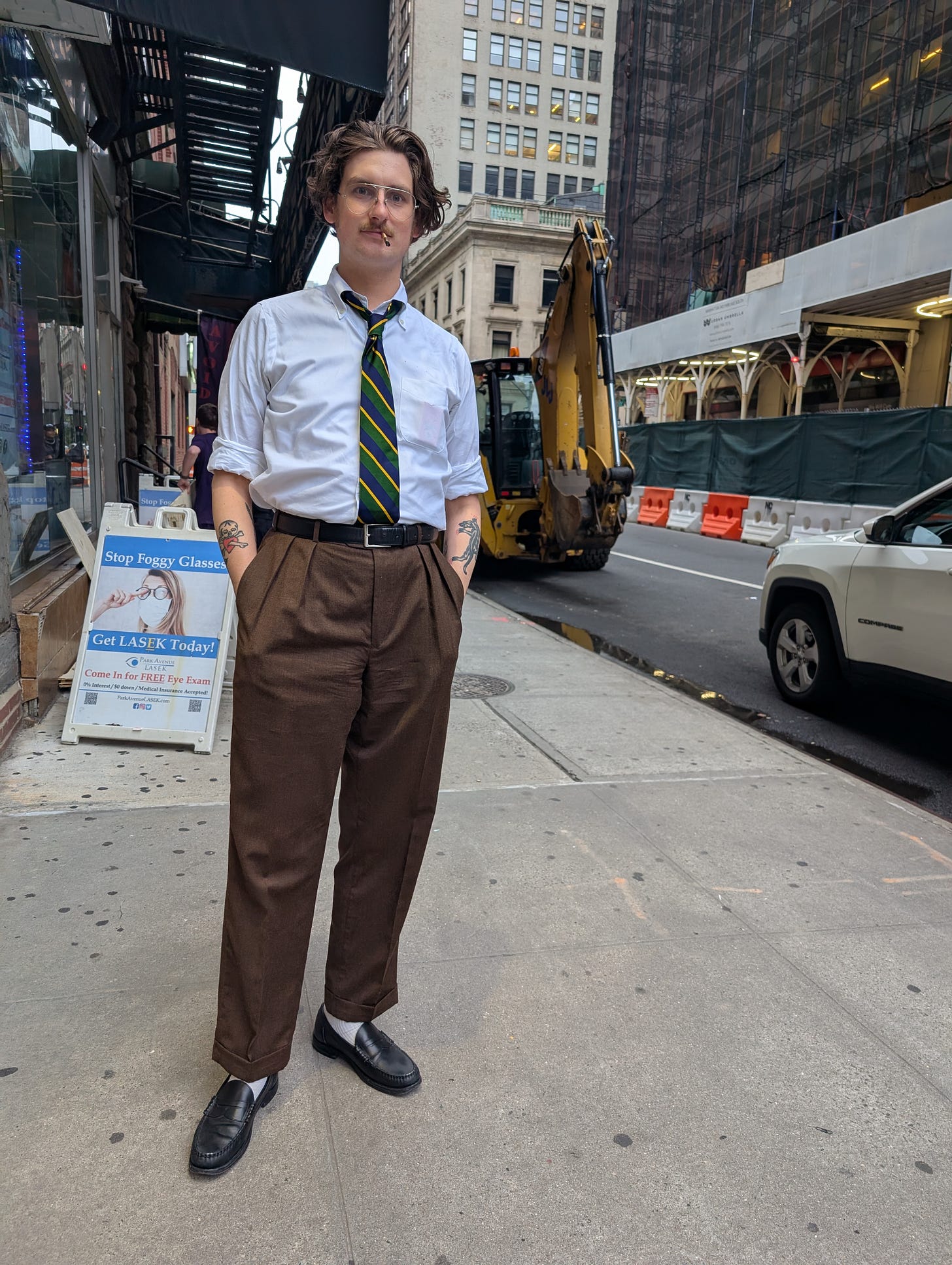
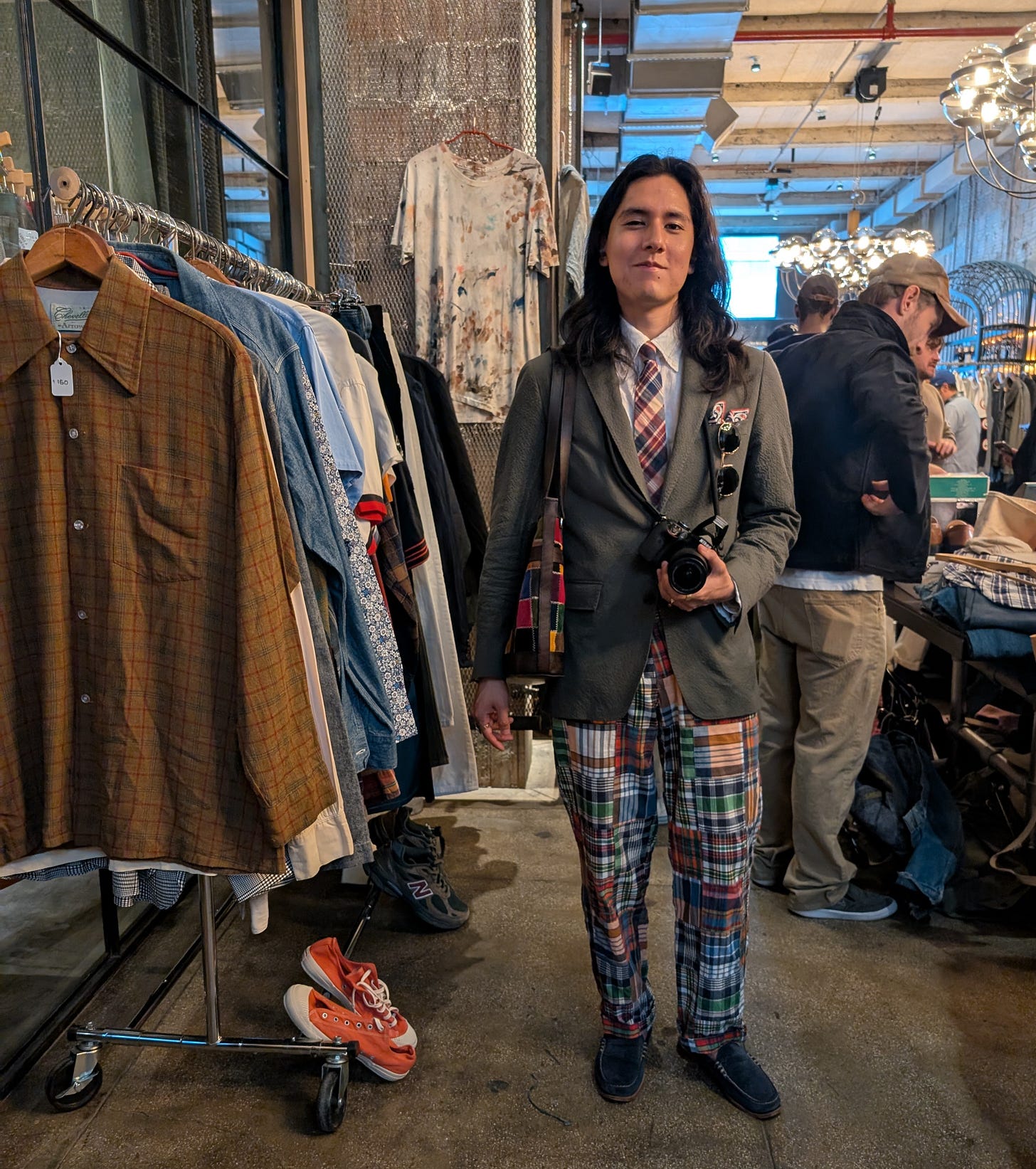
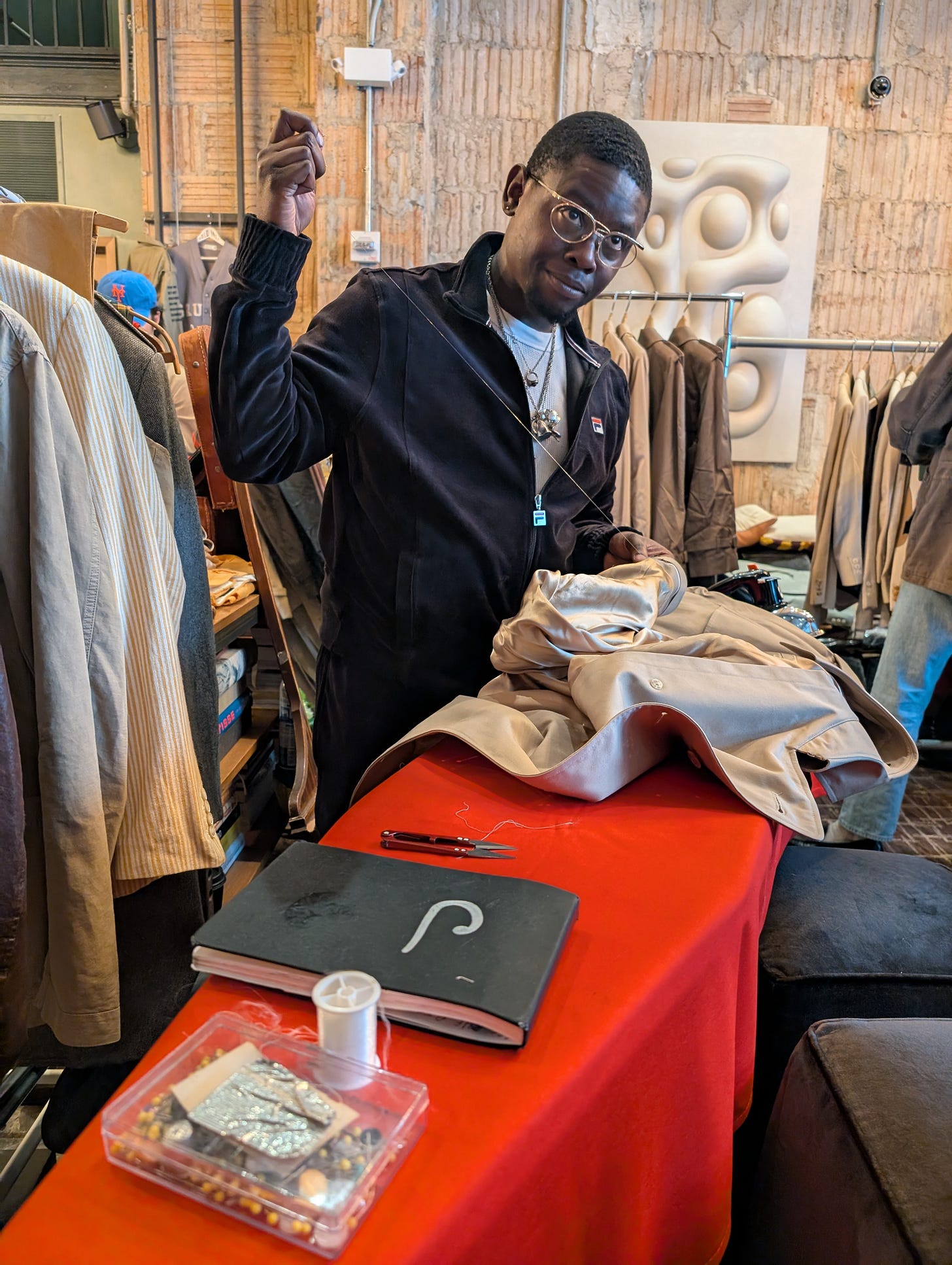





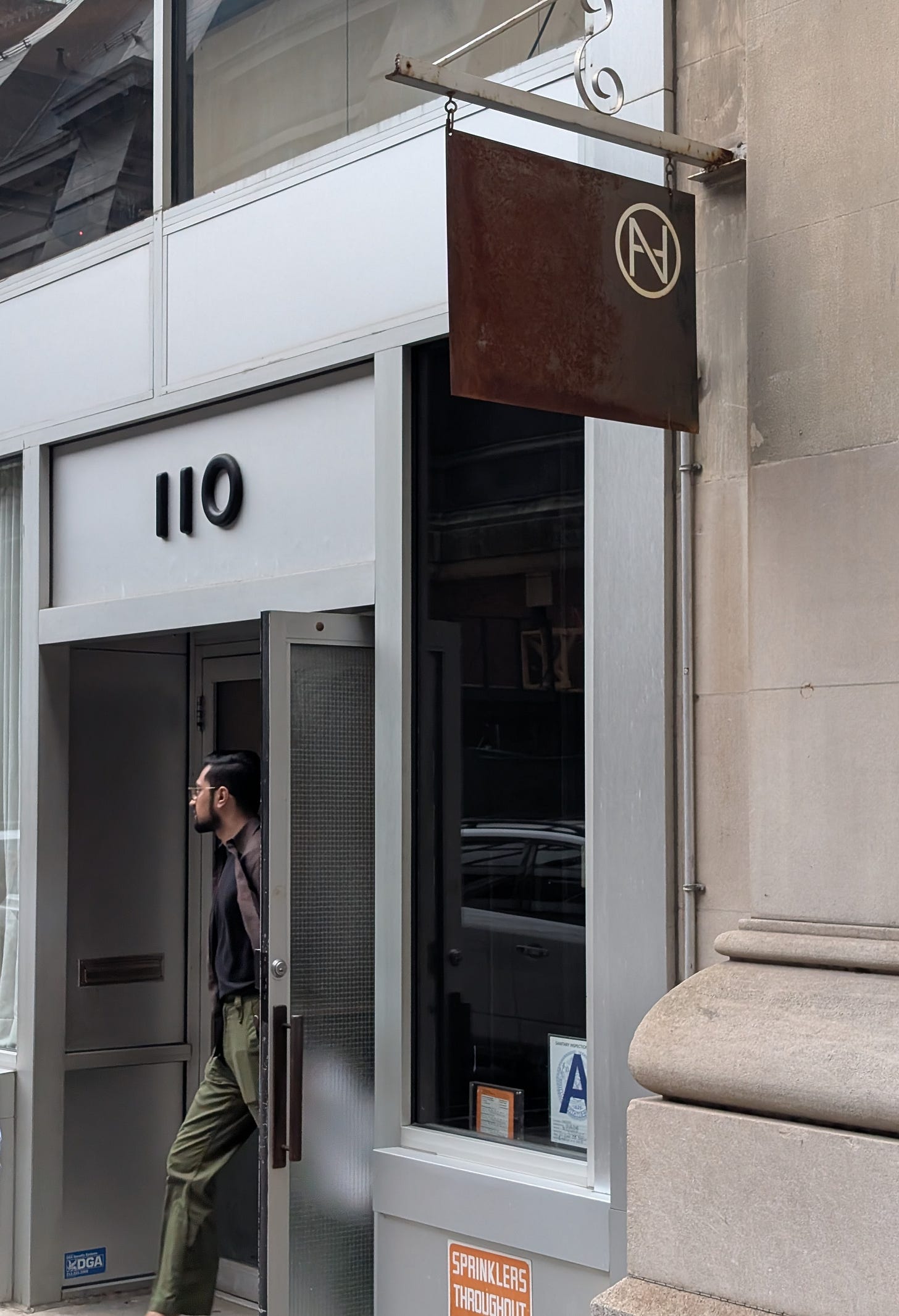
Wow! Great article! I liked learning about the old and new spaces. Very well written!
Thank you for your service king